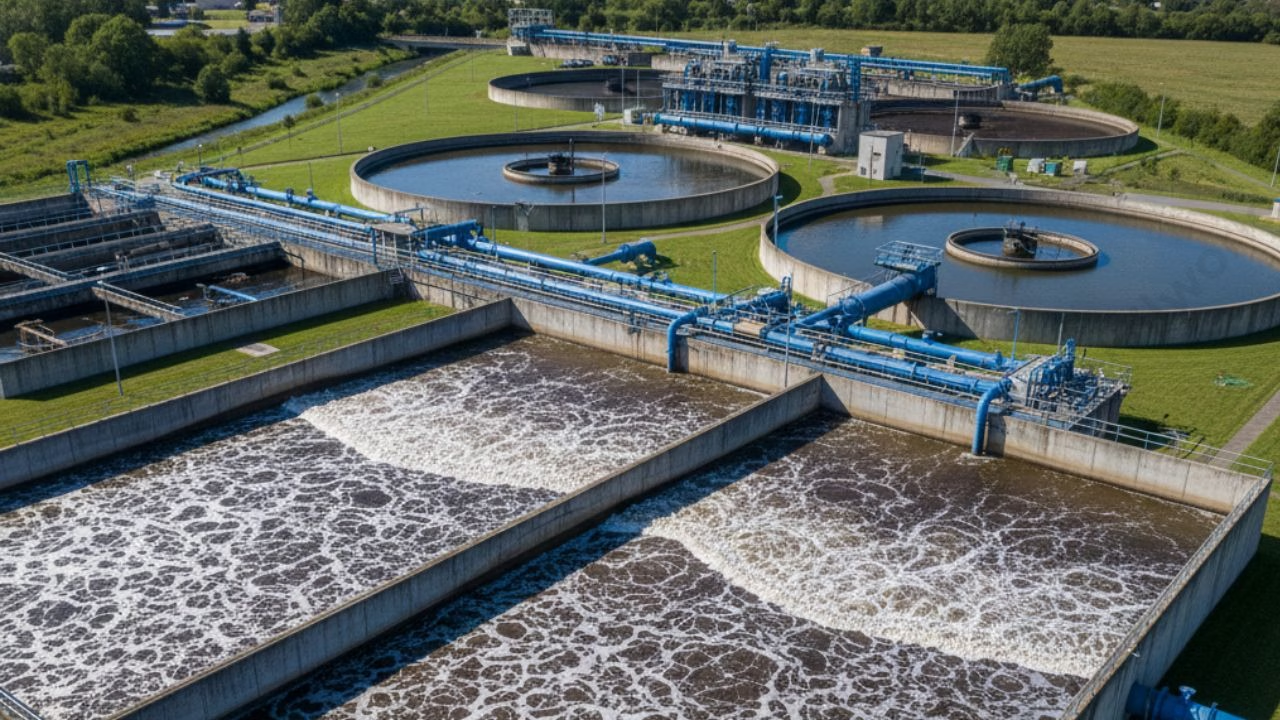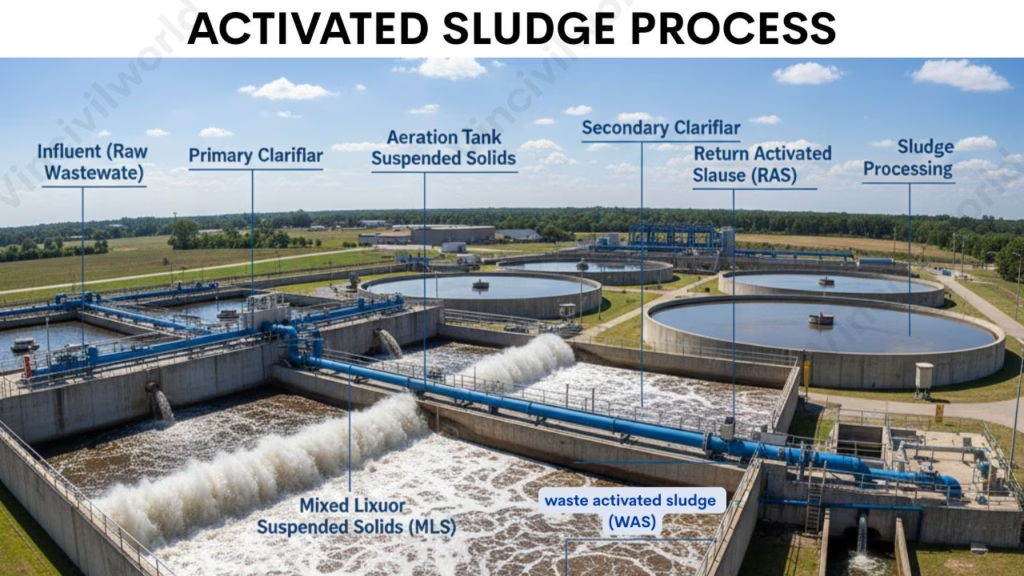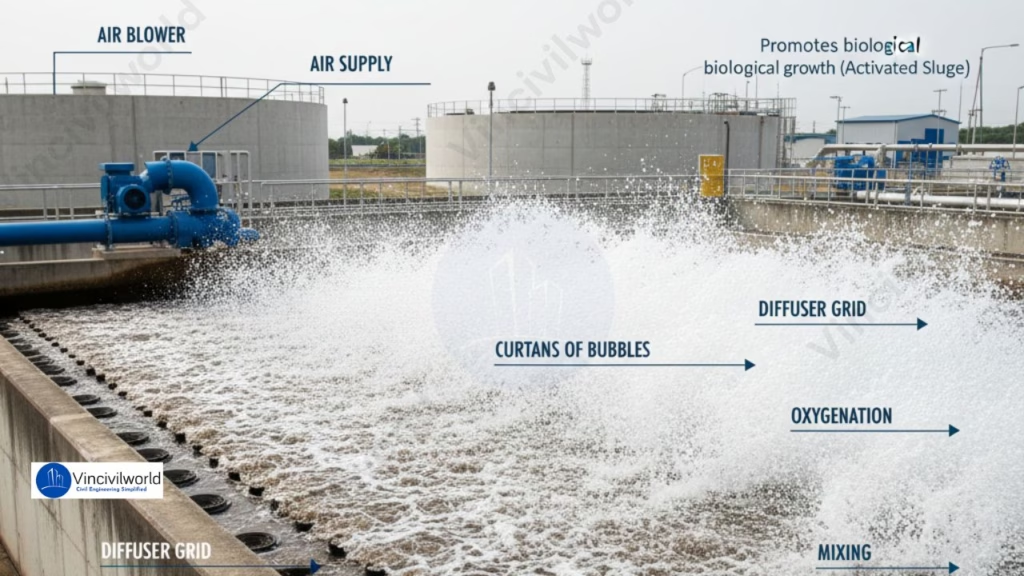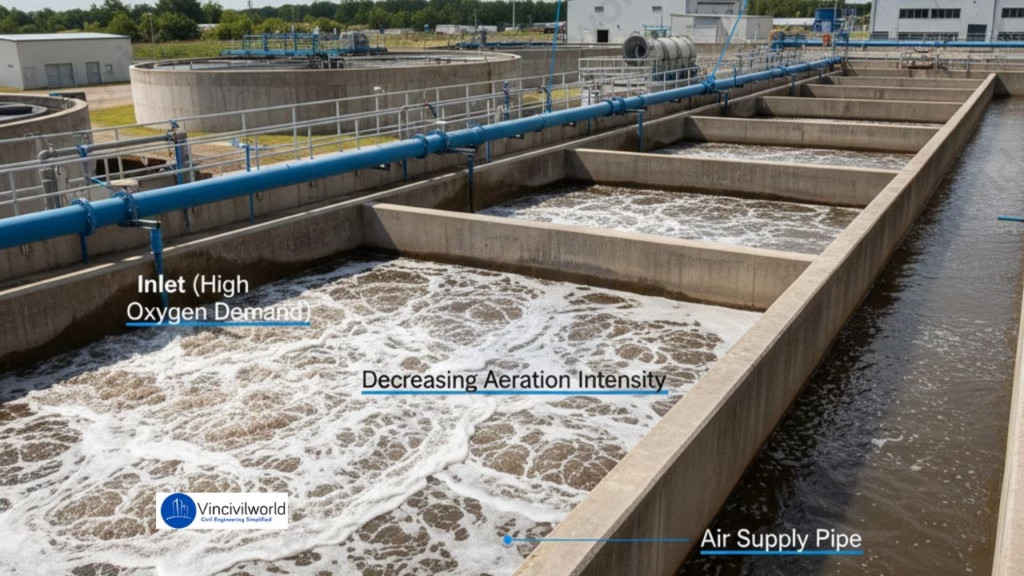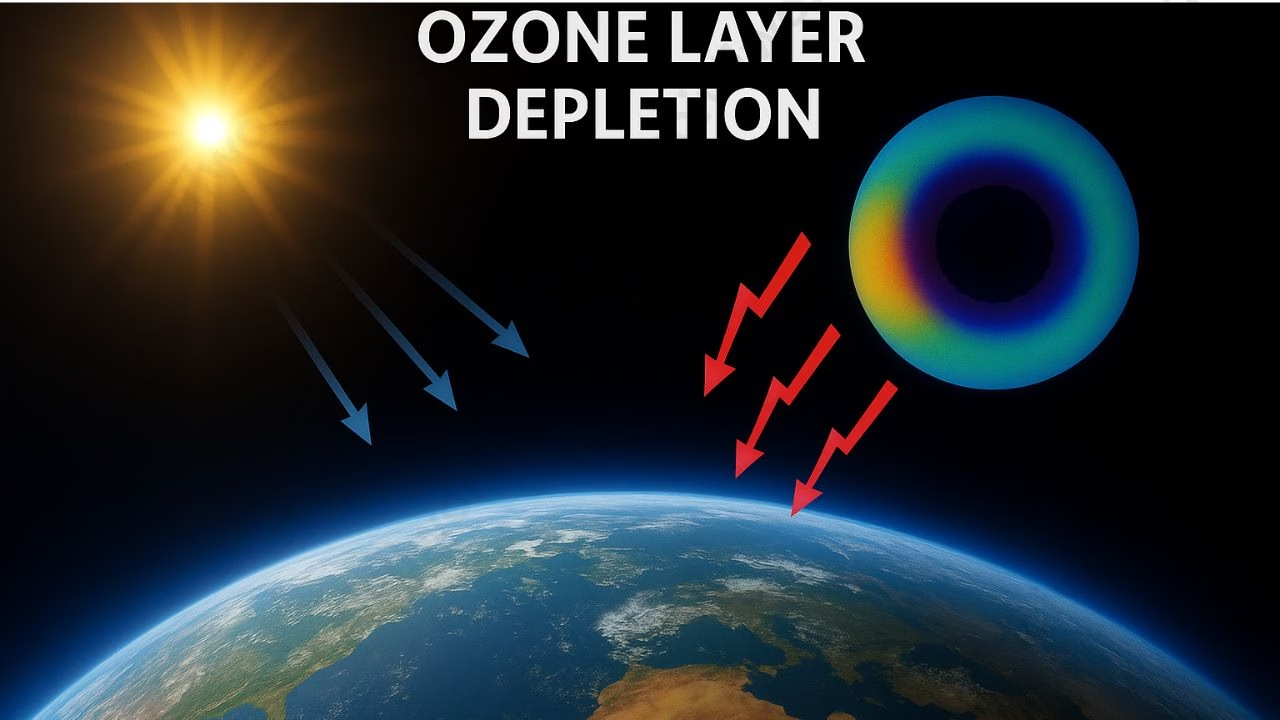The activated sludge process is one of the most important methods in wastewater treatment, using aerobic microorganisms to remove organic pollutants efficiently. This guide explains the activated sludge process definition, key stages and diagram, and the role of secondary wastewater treatment in producing cleaner effluent. You will learn how aeration tanks, wastewater treatment microorganisms, mixed liquor suspended solids (MLSS), and return activated sludge (RAS) work together to maintain stable and effective treatment performance. The activated sludge process in wastewater treatment depends on proper aeration, sludge recycling, and clear process control. Many plants rely on activated sludge wastewater treatment because it offers high efficiency and consistent results. As you explore the mechanics of this system, you will understand how operators achieve peak performance and maintain environmental compliance with confidence.
The activated sludge process is a type of wastewater treatment that uses aeration and a biological floc made up of bacteria and protozoa to clean sewage or industrial waste waters. It is a biological process that finds applications in a variety of purposes, including oxidising carbonaceous biological matter and nitrogenous waste in the biological matter (mostly ammonium and nitrogen).
The activated sludge process employs aerobic microorganisms that can digest organic substances in sewage. Also, they have the ability to cluster together via flocculation. The flocculated particles settle out as sludge. As a result, the liquid coming out is relatively free of suspended solids and organic matter.
Table of contents
Activated Sludge Process – Stages, Configuration, and Diagram
The activated sludge process is a widely used secondary wastewater treatment method designed to remove carbonaceous organic pollution through aerobic biological activity. The configuration of an activated sludge wastewater treatment system consists of interconnected units that operate together to ensure efficient treatment.
Aeration Tank
The aeration tank is the heart of the activated sludge process in wastewater treatment. Primary treated sewage is mixed with microorganisms, forming mixed liquor suspended solids (MLSS). Air or oxygen is supplied using diffusers or mechanical aerators to support aerobic microbes. These microorganisms consume organic matter and convert it into stable end products.
Secondary Settling Tank (Secondary Clarifier)
The mixed liquor flows into the secondary settling tank, where biological flocs settle by gravity. Clarified effluent overflows for further treatment or discharge. Settled sludge collects at the bottom.
Sludge Recycling System
A portion of the settled sludge is returned as Return Activated Sludge (RAS) to maintain microbial concentration in the aeration tank. Excess sludge is removed as Waste Activated Sludge (WAS) to control sludge age and system stability.
Advanced control systems regulate aeration, sludge recycling, and flow rates, ensuring stable and efficient secondary wastewater treatment performance.
Now, how about looking deep into what happens inside an activated sludge process?
Activated Sludge Process – Stages
The activated sludge process operates through a series of well-defined stages that enable effective secondary wastewater treatment. Each stage supports biological activity, sludge separation, and recycling to achieve high organic pollutant removal and regulatory compliance.
- Preliminary Treatment: Screening and grit removal eliminate large debris and abrasive materials to protect downstream units.
- Aeration Tank: Primary treated wastewater mixes with mixed liquor suspended solids (MLSS). Aerators or diffusers supply oxygen, enabling microorganisms to break down organic matter into stable end products.
- Biological Oxidation: Microbes convert organic pollutants into CO₂, water, nitrates, sulfates, and new microbial cells.
- Secondary Settling Tank (Clarifier): Biological flocs settle by gravity, separating treated effluent from sludge.
- Sludge Recycling (RAS): A portion of settled sludge returns to the aeration tank to maintain microbial concentration.
- Excess Sludge Removal (WAS): Remaining sludge moves to digesters for further treatment and safe disposal.
This sequence ensures efficient and stable activated sludge wastewater treatment performance.
“Mixed liquor” refers to the combination of the liquid and microorganisms in the aeration tank. The suspended solids are called “Mixed Liquor Suspended Solids” (MLSS).
In the next section, we will find out the basic process control parameters in an activated sludge process.
Activated Sludge Process -Process control Techniques
The general process control method monitors the following variables:
- Sludge Volume Index (SVI)
- Mean Cell Residence Time (MCRT)
- Food to Microorganism Ratio (F/M)
- Dissolved oxygen (DO)
- Biochemical oxygen demand (BOD)
- Chemical oxygen demand (COD)
Let me explain these parameters in detail.
Sludge Volume Index (SVI)
Sludge Volume Index (SVI) measures the settling characteristics of activated sludge in wastewater treatment plants. It is defined as the volume (in milliliters) occupied by 1 gram of dry sludge solids after 30 minutes of settling in a 1000 ml graduated cylinder. SVI indicates how well the sludge settles and compacts in the secondary clarifier. A good, well-settling sludge typically has an SVI range of 40–100 ml/g. Bulking sludge, dominated by filamentous microorganisms, shows poor settling behavior, and its SVI can exceed 200 ml/g. Proper pH control, adequate aeration, balanced nutrient levels, and controlled addition of hydrogen peroxide help prevent sludge bulking and maintain stable activated sludge process performance..
Mean Cell Residence Time
Mean Cell Residence Time is the ratio of total mass (lbs) of mixed liquor suspended solids in the aerator and clarifier to the mass flow rate (lbs/day) of mixed liquor suspended solids leaving as final effluent.
Food to Microorganism Ratio
Food to Microorganism Ratio is the amount of organic matter fed to the microorganisms each day relative to the mass of microorganisms under aeration. In other words, it is the ratio of the amount of BOD fed to the aerator (lbs/day) and the amount (lbs) of Mixed Liquor Volatile Suspended Solids (MLVSS) under aeration.
Main Control Parameters
The mean cell residence time and F/M Ratio are the main control parameters used industrially since both are directly related to the effluent quality. However, it is tedious to control the plant on the basis of the F/M ratio since it necessitates a lot of laboratory work to find the BOD and MLSS in the system. Therefore, the mean cell residence time is the best choice for controlling an activated sludge system.
Now you got an idea about the entire process and its important parameters. Next, we move on to the various aeration methods.
For more details about these parameters refer the links
Factors Affecting Process Efficiency
Several factors influence the efficiency of the activated sludge process, and understanding these variables is essential for optimal system performance. One of the most critical factors is the dissolved oxygen concentration in the aeration tank. Aerobic bacteria require oxygen to metabolize organic pollutants, so maintaining adequate dissolved oxygen levels is crucial. Insufficient oxygen can lead to poor treatment performance and the growth of undesirable anaerobic bacteria, which produce foul-smelling byproducts.
Another significant factor is the sludge retention time (SRT), also known as the sludge age. SRT is the average time the microorganisms remain in the system, and it directly impacts the microbial population and treatment efficiency. A longer SRT allows for the growth of slower-growing microorganisms that can degrade more complex compounds, while a shorter SRT favors faster-growing bacteria that handle simpler organic matter. Balancing SRT is essential for maintaining a diverse and effective microbial community.
Temperature also plays a vital role in the activated sludge process. Most microorganisms in the system are mesophilic, thriving in moderate temperatures between 10°C and 30°C. Temperature fluctuations outside this range can slow down microbial activity, reducing treatment efficiency. Additionally, other factors such as pH, nutrient availability, and influent wastewater characteristics can affect the process. Regular monitoring and control of these parameters are crucial for ensuring consistent and effective wastewater treatment.
Aeration Methods in Activated Sludge Process
Aeration plays a vital role in the activated sludge process by supplying oxygen and ensuring proper mixing in the aeration tank. Adequate aeration supports microbial activity, promotes organic matter oxidation, and maintains stable biological treatment performance in wastewater treatment plants.
The decomposition of organic waste requires a very high concentration of oxygen at the initial stages of contact between microorganisms and the organic matter. The conventional systems usually maintain a plug flow hydraulic regime and keeps aeration and a mixing at an uniform rate along the entire tank. As a result, the oxygen concentration drops rapidly in the inlet and this can harm the microbes.
At the outlet, there is a surplus of oxygen which is not necessary and leads to economical losses. In order to match the oxygen supply and demand along the entire journey of wastewater from inlet to outlet, the mode of aeration needs some modifications. Let’s have a look at the different aeration methods in an activated sludge process.
Aeration Methods:
- Diffused aeration system
- Tapered Aeration
- Step Aeration
- Complex Mix Activated sludge process
- Pure oxygen activated sludge process
Diffused Aeration
Sewage liquor is pumped into large tanks with floor-mounted diffuser grid aeration devices. Passing air creates a curtain of bubbles that oxygenates the liquor while also mixing it. An air blower usually creates the air. Oxygen replaces air for unusually strong and difficult to treat sewage.
Tapered Aeration
The organic waste needs more oxygen at the inlet. As it degrades progressively its oxygen demand decreases. Tapered aeration works on this principle. Aeration is intense at the inlet and decreases progressively along the length of the aeration tank. As this method involves the more efficient use of air, it results in savings in the pumping costs too.
Step Aeration
This method aims to equalize the oxygen supply and its demand. It introduces fresh feed at several points in the aeration tank, while keeping the rate of oxygen supply constant. This ensures a more even oxygen distribution over the entire tank and throughout the aeration stage. Baffles divide the aeration tank into several channels with each channel representing one step of the process.
Complete Mix Activated Sludge Process
In complete mix process, the aeration tank receives a mixture of fresh feed and recycled sludge at several locations within the tank. This ensures a constant supply and demand of oxygen along the length of the tank.
Contact Stabilisation
The microbial mass comes in contact with wastewater for short durations of time, approximately 0.5 to 1 hour in the biosorption unit. An anaerobic digestion unit stabilizes the resulting sludge after a retention period of about 2-3 hours. In the digestion unit, microbes consume the organic wastes removed in the biosorption unit. Since we stabilize the return sludge with higher solid concentrations, this reduces the volume of the aeration tank.
Pure Oxygen Activated Sludge Process
This type of activated sludge process supplies and recirculates pure oxygen in place of air into well mixed and converted chambers. Instead of the 5-10% oxygen utilization in conventional processes, the pure oxygen activated sludge process ensures about 90% utilization of oxygen. Further, it results in higher bacterial activity, lower sludge volume and sludge with better settling characteristics.
Comparison of Aeration Methods in Activated Sludge Process
| Aeration Method | Oxygen Supply Pattern | Key Feature | Main Advantage | Typical Application |
|---|---|---|---|---|
| Diffused Aeration | Uniform air bubbles via floor diffusers | Fine or coarse bubbles provide mixing and oxygen | High oxygen transfer efficiency | Municipal wastewater treatment |
| Tapered Aeration | High at inlet, decreases along tank | Matches oxygen demand with organic load | Energy and pumping cost savings | Plants with high influent BOD |
| Step Aeration | Constant oxygen, feed at multiple points | Equalizes oxygen demand | Stable operation and reduced shock loads | Variable flow conditions |
| Complete Mix Process | Uniform oxygen and mixing throughout tank | Even distribution of biomass | Handles load fluctuations well | Industrial and municipal plants |
| Contact Stabilisation | Short contact, separate stabilization | Biosorption followed by sludge stabilization | Smaller aeration tank size | Space-limited treatment plants |
| Pure Oxygen Process | Pure oxygen recirculated | Very high oxygen utilization (~90%) | Higher efficiency, better settling | High-strength wastewater |
That’s it about activated sludge process. Let us know in the comments if you wish to know more.
Key Takeaways
- The activated sludge process effectively treats wastewater using aerobic microorganisms to remove organic pollutants.
- Key stages include aeration tanks, secondary settling tanks, and sludge recycling to maintain treatment efficiency.
- Proper aeration and control parameters like SVI and F/M Ratio are essential for optimal performance.
- Various aeration methods, such as diffused and tapered aeration, improve oxygen supply and microbial activity.
- This process provides a reliable solution for secondary wastewater treatment, ensuring cleaner effluent.
Conclusion
The activated sludge process is a proven and highly efficient secondary wastewater treatment method used worldwide to remove organic pollutants from sewage and industrial wastewater. By promoting aerobic microbial activity in aeration tanks, this process achieves effective BOD reduction, suspended solids removal, and stable effluent quality. Proper control of operational parameters such as dissolved oxygen, MLSS, sludge age, and return activated sludge (RAS) ensures consistent system performance and prevents common issues like sludge bulking. With multiple activated sludge process configurations and aeration methods, the system can adapt to varying wastewater loads and treatment requirements. Due to its flexibility, reliability, and high treatment efficiency, the activated sludge process remains a cornerstone of modern biological wastewater treatment systems and sustainable water management.

